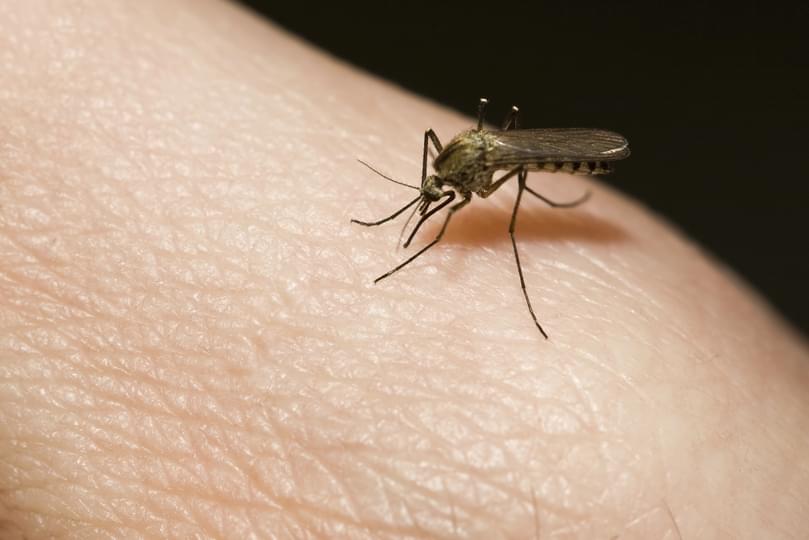
Professor Michael Bonsall, a principal investigator on the Oxford Martin Programme on the Future of Food, served as Specialist Advisor to the House of Lords Science and Technology Committee's inquiry into genetically modified insects. Here he takes a look at the benefits the genetic techniques could bring, and at how current policy and regulations are holding back research and development.
The recent House of Lords report on genetically modified (GM) Insects raises the bar on the policy profile of these (GM) technologies to a new level – we now have the unique opportunity to build out from this with an exciting and engaged science to challenge 21st century environmental issues.
Advances in molecular biology tools have allowed manipulation of genes and genomes to become common practice – most prevalent in the news is the use of CRISPR gene editing methods (but there are others) to cut and insert novel genes into genomes. This gene-editing has many applications, including directed therapeutic treatments for disease, modulating resistance to antibiotics and understanding embryo development. But controlling insect disease vectors and agricultural pests using gene-editing and gene drive (which causes the greater than 50% inheritance of the modified gene) has attracted the interest of policy-makers (as well as scientists).
GM insects in brief:
-
With gene editing, genes are inserted into an insect’s DNA in order to alter its function or reduce its fitness
-
Gene drive enables a modified gene to spread through a population at a greater rate than would be the case with natural inheritance.
-
Genetically modifying insects would help to control the spread of diseases such as malaria, dengue, chikungunya and zika
-
It could be used to target agricultural pests including the diamondback moth, olive fly, fruit flies and cotton bollworm
Controlling insect pests and vectors is big business. Too many people still die from or are debilitated by (preventable) infectious diseases spread by insects and the economic losses of agricultural crops to insects are gigantic. Genetic modification of insect genomes provides novel approaches to old control methods. But this sort of genetic modification is not without policy, regulatory and ethical implications.
The Lords report makes a number of recommendations – but the boldest was to call for a field-scale trial on GM insects – to test aspects of the science and challenge the regulatory approaches to these sorts of GM technologies.
There is a pressing need to build sharper policy for GM technologies (and particularly insects). Current EU risk regulations for GM products (be it crop plants, vaccines or insects) are stifling innovation and potential economic growth – for instance many crop plants have been deemed scientifically safe (by the European Food Safety Authority) yet a member state consensus for adopting these has repeatedly failed – so much so that national derogations are in place to allow individual member states to opt-in (or out) to accept these crop technologies.
Yet these regulations need appropriate policy direction to be operationalised for GM insects (and other GM technologies). But actually this has to be broader than just scientific risk assessments of the environmental hazards and exposure to these technologies. As highlighted in the House of Lords report, it must also involve public dialogues, conversations and explanations of the science. This responsible innovation has achieved growing support – yet similarly it needs to be properly contextualised and proportionate.
Disease-carrying insects (also known as insect vectors) and agricultural pests are currently controlled in a whole host of ways: the use of pesticides, bed nets or other activities that impact our the environment. To claim that GM insects would be a panacea and used in isolation is woefully misguided – genetic modification and deliberate release of modified insects is an additional tool to pest and vector management – each type of modification is assessed on a case-by-case basis and compared to the current control measures to ask: when, for example, a gene-drive technology that affects Aedes mosquito fertility is released, will it have greater impact to biodiversity and/or human health than the ways we currently control Aedes mosquitoes.
Development of GM (insect) policy requires broader sorts of conversations and engagement much earlier in the development of these technologies. This has merits and costs. While it would allow early explanation of the technologies, commentaries on nascent science tend to be held sacrosanct. If responsible innovation requires the earlier sharing of scientific ideas then there is greater responsibility to accept that these ideas might alter as the technology advances.
The House of Lords report is a strong and loud call for innovative, engaged and debated approaches to solving critical environmental issues now in the 21st century.
This opinion piece reflects the views of the author, and does not necessarily reflect the position of the Oxford Martin School or the University of Oxford. Any errors or omissions are those of the author.
